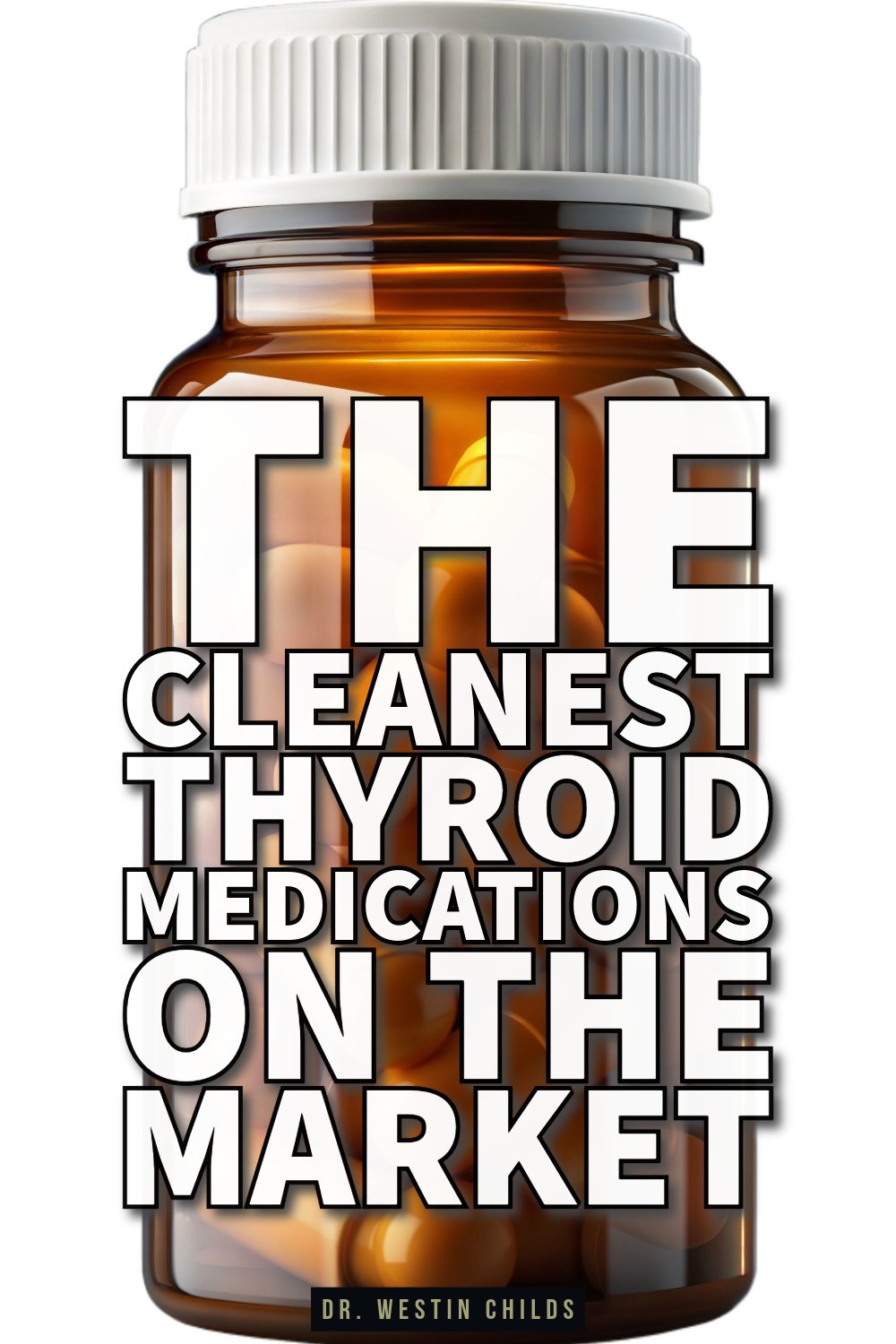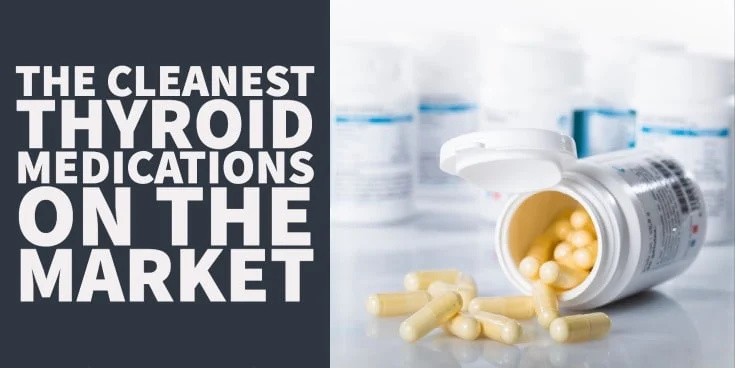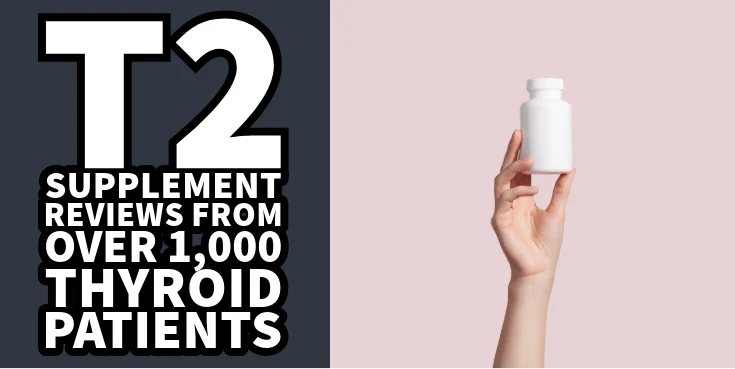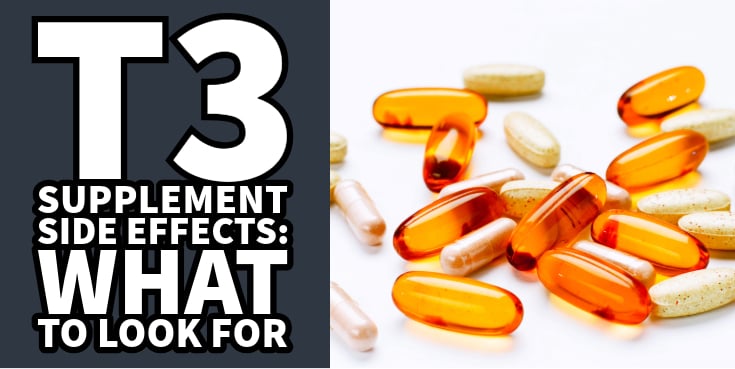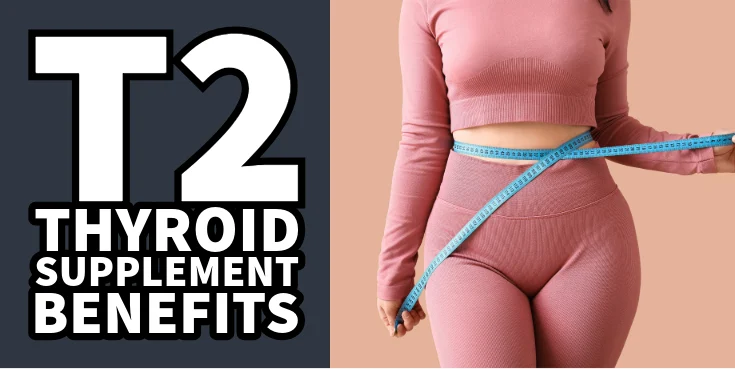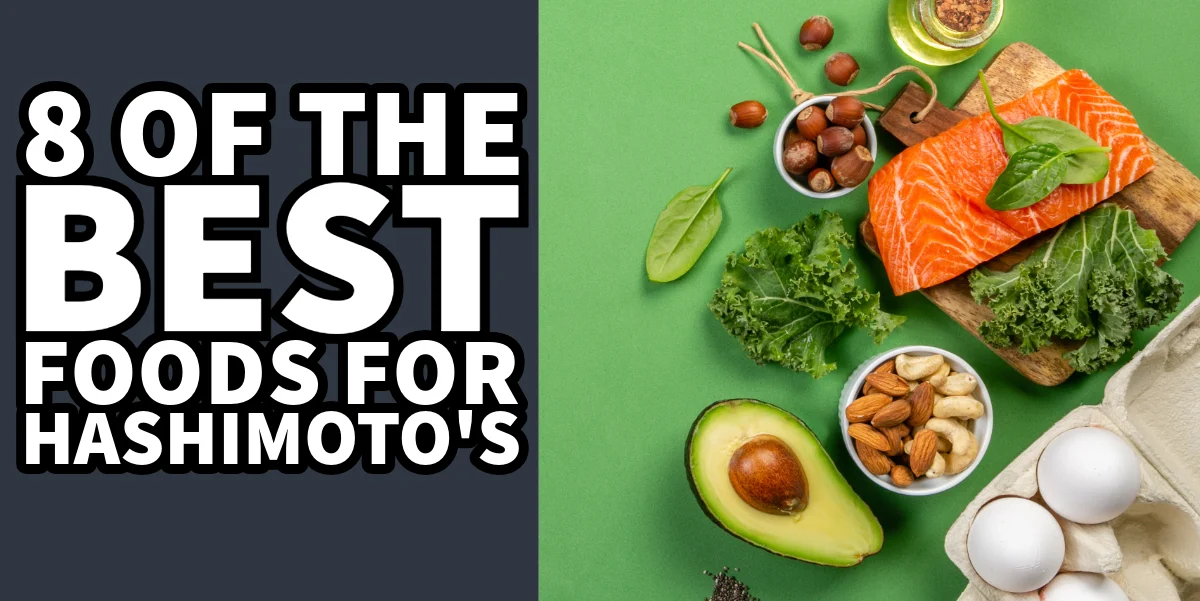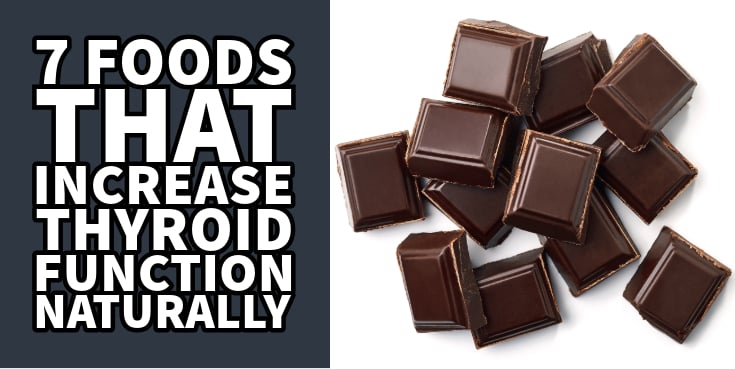What do I mean by clean?
I’m talking about the additional ingredients that come bundled inside your thyroid medication.
Here’s how all medications work:
They have an active ingredient and, usually, many different types of inactive ingredients.
The active ingredient is the ingredient that does all of the work and is the reason you are taking that medication.
In the case of thyroid medication, this is thyroid hormone.
I’ll go over the specific active ingredients in each section below, so don’t worry, but here I just want to introduce you to what it means.
The active ingredient is then combined with a whole bevy of inactive ingredients.
These inactive ingredients are referred to as excipients and their main purpose is to stabilize the active ingredient, impact its absorption (1) (for better or worse), protect the active ingredient, improve the bioavailability of the active ingredient, and assist in the manufacturing process.

You can already see the tug of war start to develop between the patient’s needs and the manufacturer’s needs with the list I just mentioned above.
Take for instance the idea of assisting in the manufacturing process.
Many prescription medications have ingredients added to them which help the machines that create and manufacture medications work more efficiently and prevent getting jammed or stuck.
These ingredients help the machines but they may not help the humans who then ingest them, and, in fact, may cause problems for certain people (more on this below).
There’s also a cost that needs to be considered.
Sometimes cheaper inactive ingredients are used simply to cut corners and reduce the cost per tablet or cost per capsule during production.
This creates a strange scenario in which the ingredients used for any given medication are not always picked with the patient’s best interest in mind.
One way that you as a thyroid patient can combat this problem is by choosing medications that are clean and free of these binders, fillers, and dyes.
It was previously believed that inactive ingredients (excipients) just existed in the background of prescription medications and didn’t cause any issues.
More research, however, has proven that not be entirely true (2).
DOWNLOAD FREE RESOURCES
Foods to Avoid if you Have Thyroid Problems:
I’ve found that these 10 foods cause the most problems for thyroid patients. Learn which foods you should avoid if you have thyroid disease of any type.
The Complete List of Thyroid Lab tests:
The list includes optimal ranges, normal ranges, and the complete list of tests you need to diagnose and manage thyroid disease correctly!
Fillers, Binders, and Dyes Oh My
If we were to line up and rank order different types of patients based on their sensitivity to foods, medications, and ingredients, thyroid patients would be on the highly sensitive end.
Because of how thyroid hormone impacts the immune system, metabolism, cellular function, and gut health, thyroid patients just have a harder time than most in dealing with different types of compounds, chemicals, and medications.
Let me give you a practical example of what this means for you as a thyroid patient:
It means that even a small amount of inactive binders, fillers, and dyes, may impact your ability to use and absorb thyroid medication.
I know it sounds ridiculous, especially given the small volume of these ingredients found in thyroid medication but it’s absolutely true.
We know this because when we look at different thyroid patients and how they react to medications that are otherwise the exact same, we see differences in not only how patients feel while taking these medications but also in how they impact their thyroid hormone lab tests.
Here are two examples that illustrate this point:
#1. Taking the exact same medication but at a different time of the day impacts free thyroid hormone levels and symptoms.
To give you an idea of how fickle thyroid medication can be, we have this study which showed that taking the same thyroid patients taking thyroid medication in the morning vs the evening saw better free t4 levels when taking it at night.
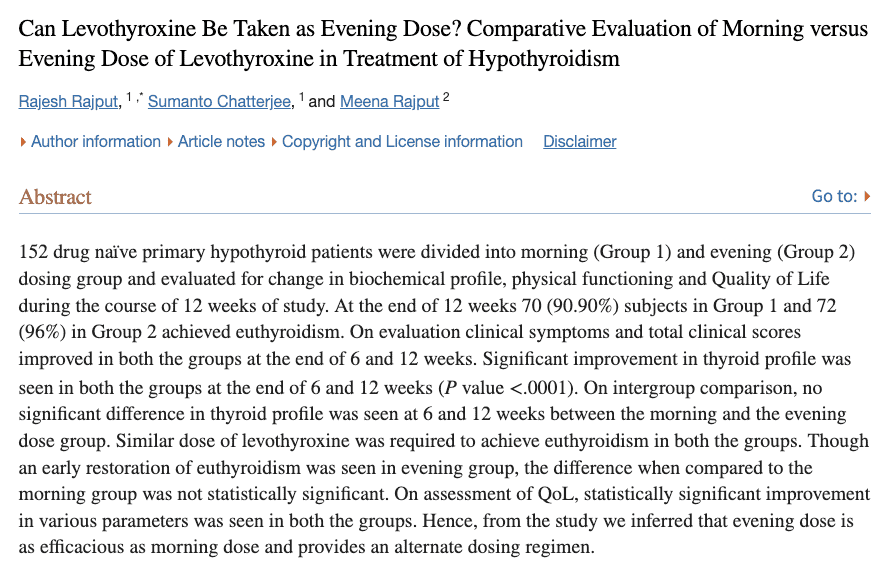
If you think about it, it’s very strange that taking the same medication at different times of day would have a noticeable impact on how it helps your body.
For most prescription medications, the time of day that you take it doesn’t really matter, it just matters that you get it into your body on a consistent basis.
But this isn’t true for thyroid patients.
There are sensitive enough that a change in the time of day that they take thyroid medication is enough to impact how it makes them feel.
#2. Some patients show a preference for levothyroxine vs Synthroid despite these medications being almost identical.
We also have studies that show that simply switching from levothyroxine to Synthroid (3) (or vice versa) is enough to improve thyroid lab tests and reduce thyroid-related medical costs!
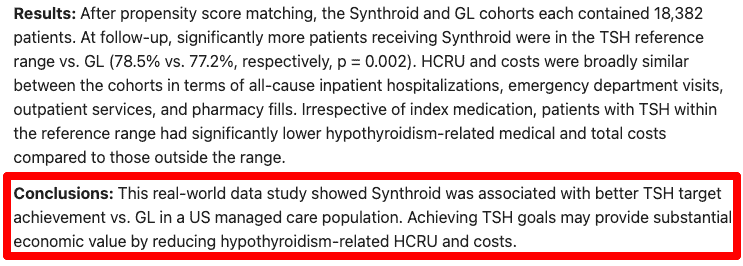
And, there’s really no other way to explain why this occurs except to blame the inactive ingredients.
Here’s why:
Both levothyroxine and Synthroid contain the same active ingredient (thyroxine) but differ slightly in their inactive ingredients.
They also contain the same amount of active ingredient dose for dose.
So if you take 100mcg of levothyroxine or 100mcg of Synthroid, you’re getting the same amount of thyroid hormone.
The only difference between these two doses would be the amount and type of inactive ingredients.
And we know that this small difference is enough to impact free thyroid hormone levels and symptom control.
What does this mean for you?
It means as a thyroid patient that you better start paying attention to those inactive binders, fillers, dyes, and ingredients because they can and do have an impact.
Cleanest Thyroid Medications by Class:
Ok, now that you understand the importance of these inactive binders, fillers, and dyes, let’s talk about how you can eliminate them.
Switching your medication to a cleaner version doesn’t guarantee that it will work for you, but it does eliminate variables that may cause problems which is always a good thing.
So as long as the cost of switching is reasonable and your doctor is willing to work with you, it’s worth considering.
Below you will find a list of the cleanest thyroid medications based on the class of thyroid medication.
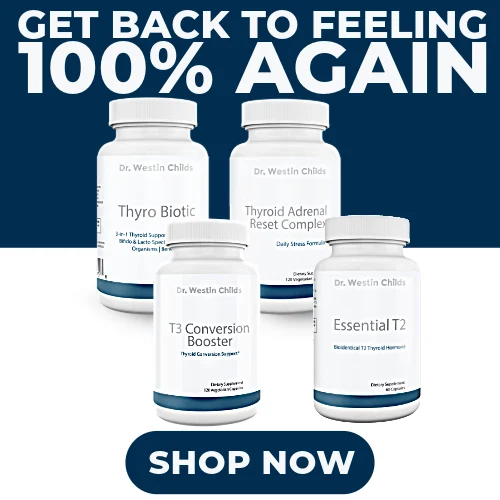
I have separated them by categories because it’s important to realize that thyroid patients have the potential to do well on pretty much any type of thyroid medication.
So it’s more about finding what works for you within each class as opposed to trying to pick the cleanest medication out of all of the options.
Some classes of thyroid medication are also easier to obtain than others.
So it makes more sense to have several options available to you as opposed to just one.
Cleanest T4-Only Thyroid Medications
T4-only thyroid medications all contain the same active ingredient: thyroxine.
This is the same bioidentical thyroid hormone that your thyroid gland produces when it is healthy.
T4-only thyroid medications are the most commonly prescribed thyroid medications because they are cheap, cause fewer side effects than T3 thyroid medications, and because doctors are comfortable prescribing them.
The most commonly prescribed thyroid medication is levothyroxine.
Unfortunately, it’s also one of the dirtiest versions available.
The cleaner T4-only thyroid medications also happen to be some of the most expensive options available but there are some generic versions starting to become available now which should cut down their costs significantly.
T4-only thyroid medications are also great options to consider because most doctors will have no problem switching you from levothyroxine or Synthroid to the cleaner options I’ve listed below.
This is not always true for other thyroid medications as we will soon discuss.
With this in mind, here are the two cleanest t4-only thyroid medications available right now:
- Active ingredient: thyroxine (T4).
- Inactive ingredients: gelatin, glycerin, and water.
Tirosint-Sol ingredient list (5):
- Active ingredient: thyroxine (T4).
- Inactive ingredients: glycerol and water.

How easy is Tirosint and Tirosint-Sol to get?
Fortunately, obtaining Tirosint and Tirosint-Sol is not as difficult as some of the other medications that we will discuss but it will require a discussion with your current prescribing doctor.
When switching from something like levothyroxine to Tirosint, the dose stays the same which makes the conversion process very easy.
There’s no clear winner between Tirosint and Tirosint-Sol as some people prefer one over the other.
Tirosint comes in a gel cap and Tirosint-Sol is a solution so preference and ability to swallow also play a role.
One thing is for sure, though, most thyroid patients who make the switch to one of these two medications do see an improvement in how they are feeling.
Cleanest NDT Thyroid Medications
NDT which stands for natural desiccated thyroid has had a bumpy couple of years.
Between multiple formulation recalls and formulation changes, NDT medications are not working quite as well as they once did.
If you went back in time even 10 years, you would find that these were some of the most highly recommended thyroid medications available.
Now due to availability issues, and what looks to be a concerted effort to limit access to these medications, they aren’t as widely used as they once were.
Having said all of this, I’m still hopeful that they will one day make a comeback!
In addition, I want to include this information for completeness’ sake just so you have more information when making a decision as to which medication to use.
NDT thyroid medications are usually porcine-derived and are created by desiccating (drying) up the thyroid gland of pigs.
During the manufacturing process, these medications are standardized to contain specific doses of T4 and T3.
As a result, they also contain different fillers and binders just like levothyroxine and Synthroid.
Unfortunately, some of the cleaner versions of NDT also contain an ingredient that can cause a lot of issues for thyroid patients.
Because of this, it’s a little more difficult to identify the cleanest versions but I will do my best based on the number of inactive ingredients.
The NDT version with the cleanest ingredient profile can be found below:
- WP Thyroid
WP Thyroid ingredient list (6):
- Active ingredients: triiodothyronine (T3), thyroxine (T4).
- Inactive ingredients: inulin, medium-chain triglycerides, and lactose monohydrates.
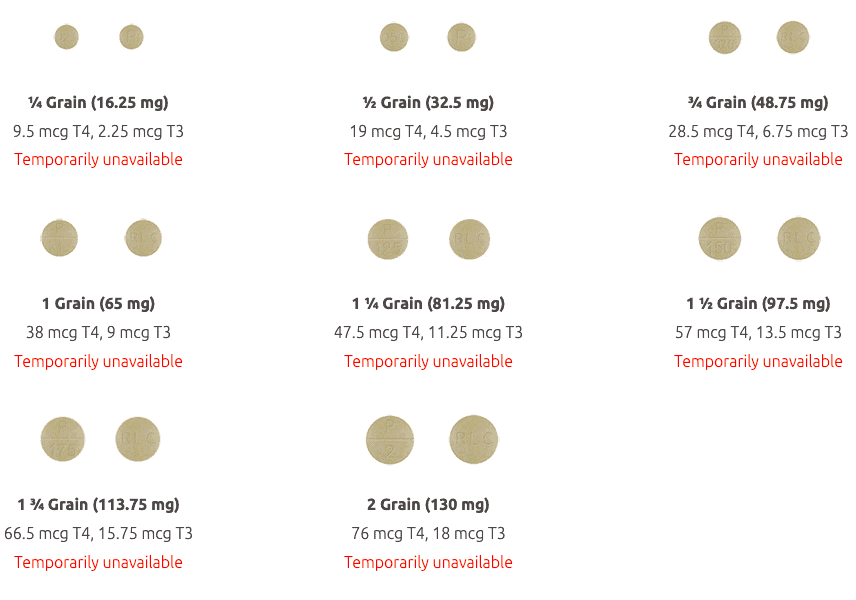
Unfortunately, WP thyroid isn’t available right now so the next best option would be NP Thyroid.
NP thyroid ingredient list:
- Active ingredients: triiodothyronine (T3), thyroxine (T4).
- Inactive ingredients: calcium stearate, dextrose monohydrate, maltodextrin, and mineral oil.
How easy is it to get WP Thyroid and/or NP Thyroid?
Getting your doctor to prescribe NDT formulations like WP Thyroid and NP thyroid can be very difficult.
Conventional doctors like endocrinologists and family practice doctors are not familiar with these medications and they are not as frequently used as thyroid medications like levothyroxine.
For this reason, you typically need to go to a holistic type of doctor to get them.
Doctors that specialize in functional medicine, integrative medicine, and naturopathic medicine, are more likely to prescribe NDT.
Obtaining NDT is also complicated by availability issues and insurance coverage as well.
Formulations like WP thyroid and Nature-throid (7) have been temporarily unavailable for around two years now and some speculate they may never return.
There have also been recent attempts from the FDA to label compounded NDT formulations as biologics which would further limit their availability.
The future of some NDT formulations is unclear right now but it doesn’t look like Armour thyroid is going anywhere so that is always a fallback option.
Cleanest T3-Only Thyroid Medications
T3 medications are the most powerful thyroid medications on the market and, unfortunately, are some of the least prescribed.
T3 medications can be safely used, but their dosing and side effects differ from levothyroxine which is why doctors are typically hesitant to prescribe them.
They just aren’t as comfortable with them as they are with other thyroid medications.
Because of the recent issues with NDT, many thyroid patients have been forced to switch from NDT formulations to combinations of synthetic T4 and T3.
And because this might be the future of thyroid medication dosing, it’s very important to understand at least a little bit about T3 medications.
In terms of T3 prescription options, you really only have three choices: Cytomel, liothyronine, and sustained-release T3.
Cytomel and liothyronine are very similar to Synthroid and levothyroxine except that they contain T4 thyroid hormone instead of T3.
Sustained release T3 is unique in that it is only available from a compounding pharmacy and has the potential to be the cleanest option of them all.
Here’s why:
Compounding pharmacies can add or remove most ingredients on demand in order to meet the needs of specific patients.
This is completely different from the approach taken by most big box pharmacies which just mass-produce standard formulations of thyroid medications for the masses.
Using a compounding pharmacy allows you to fine-tune your medication to your needs by adjusting the dose of the active ingredients and by reducing or eliminating inactive ingredients.
For this reason, I can’t give you a list of inactive ingredients like I could for other thyroid medications.
The cleanest T3-containing thyroid medication:
- Sustained Release T3
Sustained release T3 ingredient list:
- Active ingredient: triiodothyronine (T3).
- Inactive ingredients: varies based on the compounding pharmacy and request from the doctor.
How easy is it to get sustained release T3?
The only problem with getting compounded T3 medications is that doctors are typically not familiar with compounding pharmacies.
For this reason, getting sustained release T3 is usually easier with non-conventional doctors.
Sustained release T3 is often best used in combination with synthetic T4-only thyroid medications like Tirosint or Tirosint-Sol but can even be combined with NDT.
Your Next Steps
As a thyroid patient, make sure you are paying attention to not only the type of thyroid medication that you are taking but also the inactive ingredients found inside of it!
These inactive ingredients can have a huge impact on how well that medication works for you.
My motto for inactive ingredients is always when in doubt, leave it out.
The fewer inactive ingredients you take the better.
Just make sure you don’t hyperfocus on this aspect of your thyroid medication, either.
While inactive ingredients are important and can play a role, other factors like your dose of active thyroid hormone are still much more important.
Now I want to hear from you:
Were you aware of how important inactive ingredients are in thyroid medication formulations?
Have you tried any of the clean versions that I’ve listed in this article?
Did they work for you? Why or why not?
Are you planning on making the switch to any of those listed above?
Why or why not?
Leave your questions or comments below!
Scientific References
#1. ncbi.nlm.nih.gov/pmc/articles/PMC7284856/
#2. pubmed.ncbi.nlm.nih.gov/3287089/
#3. pubmed.ncbi.nlm.nih.gov/34905150/
#4. accessdata.fda.gov/drugsatfda_docs/label/2017/021924s013lbl.pdf
#5. accessdata.fda.gov/drugsatfda_docs/label/2016/206977s000lbl.pdf
#6. getrealthyroid.com/assets/docs/WP-Thyroid-Prescribing-Information.pdf
#7. getrealthyroid.com/assets/docs/Nature-Throid-Prescribing-Information.pdf
